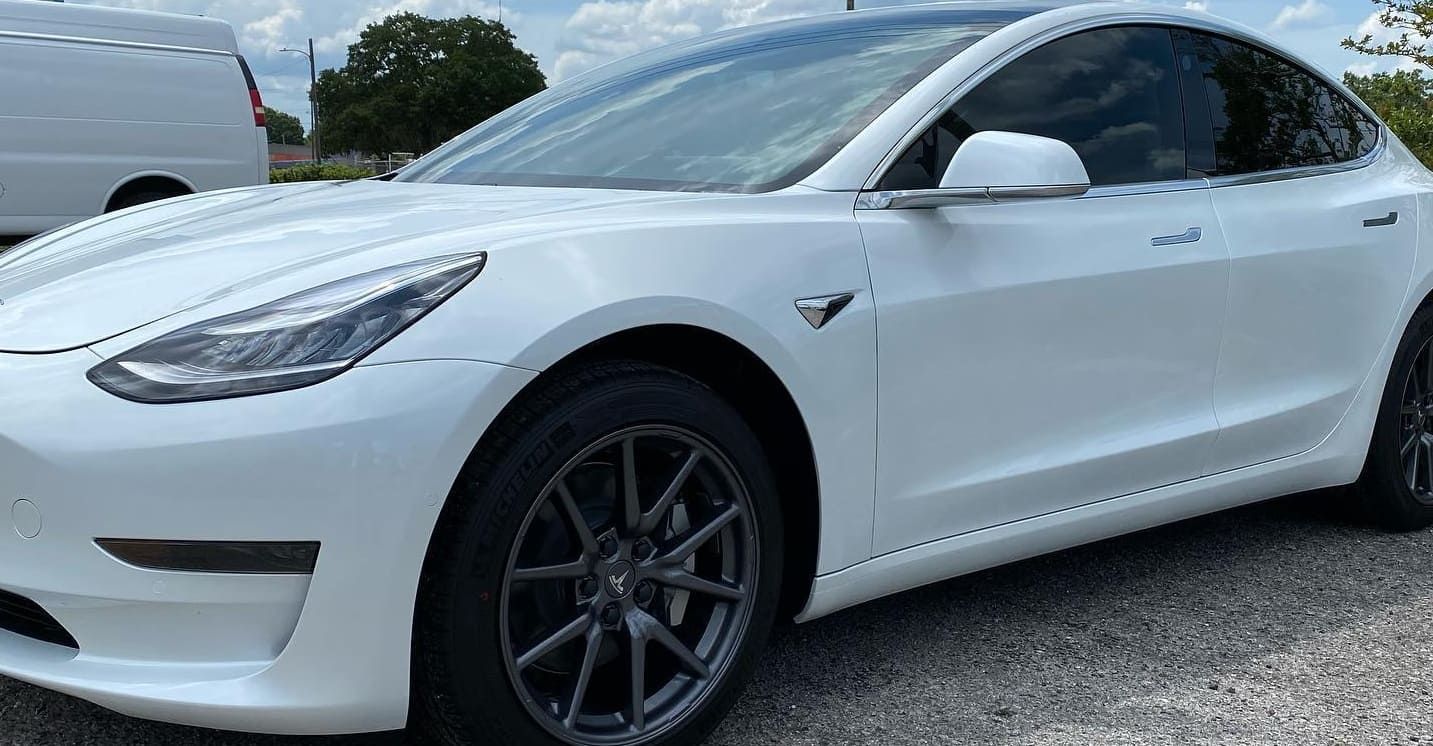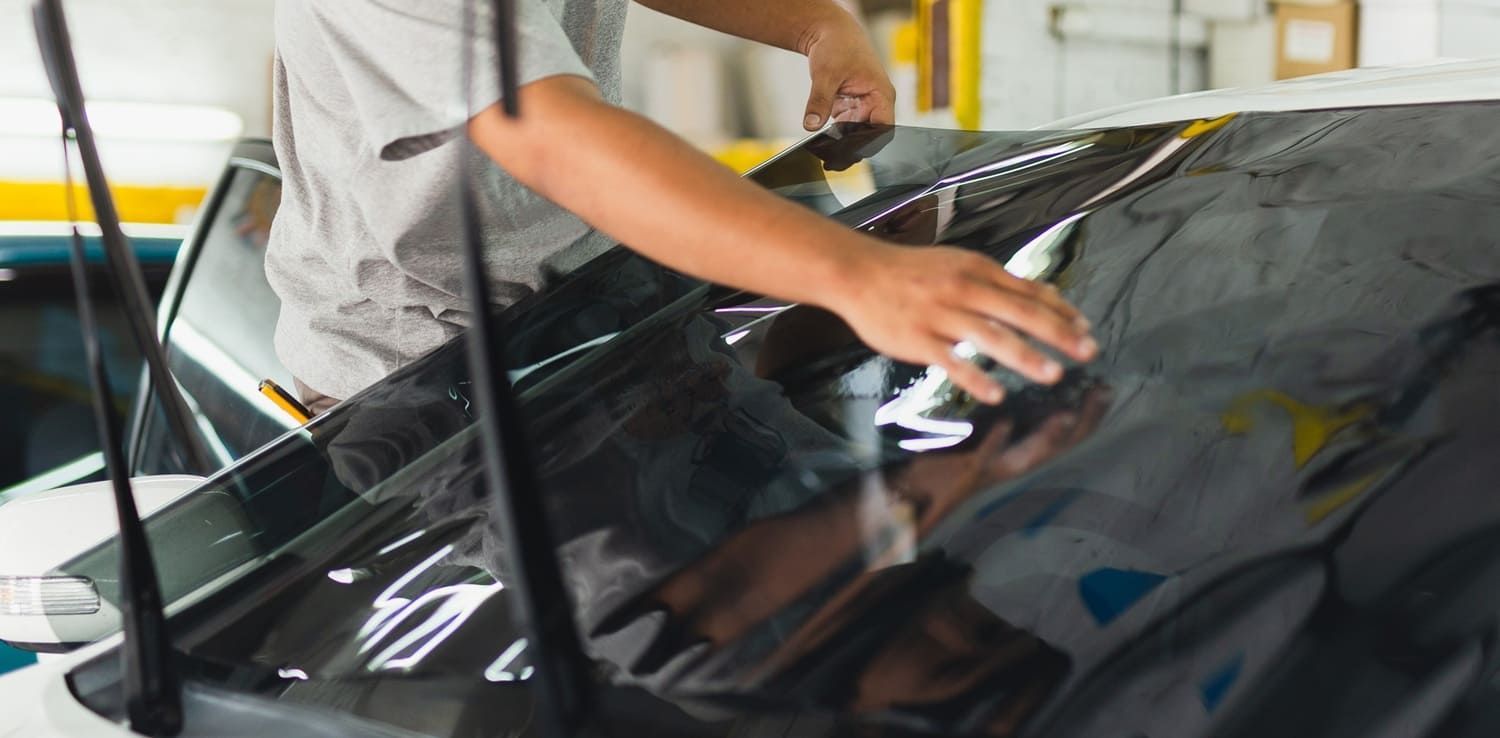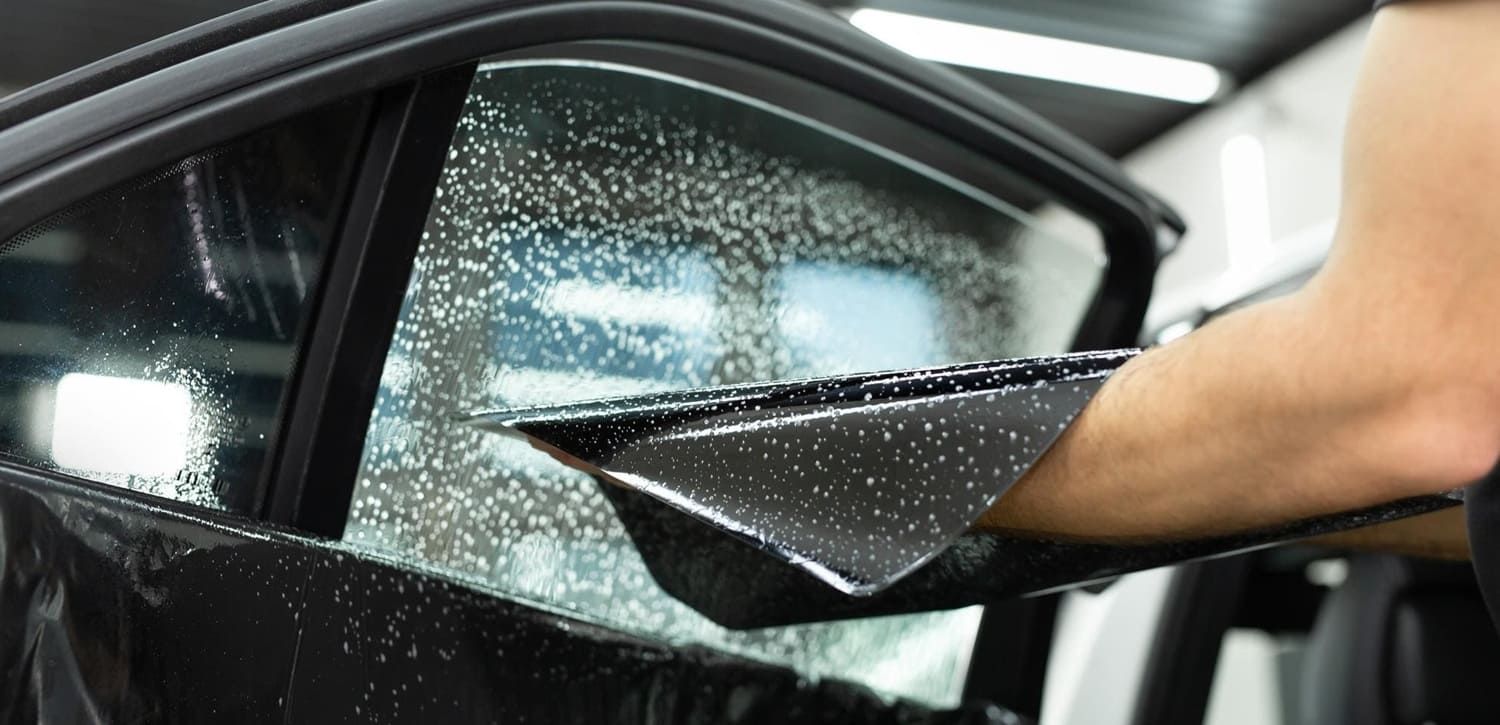Window Tint Maintenance: Do's and Don'ts
Window tints are a popular addition to many vehicles. They offer a range of benefits, from enhancing privacy to reducing heat and glare.
However, to keep them looking their best, regular maintenance is crucial. This not only ensures their longevity but also maintains their effectiveness.
In this guide, we'll explore the do's and don'ts of window tint maintenance. We'll delve into the best practices for cleaning and caring for your tints, ensuring they remain in top condition.
We'll also discuss the potential risks of neglecting your window tints. From peeling to bubbling, improper care can lead to a host of issues.
Whether you're a car owner, a DIY enthusiast, or someone who's recently had window tints installed, this guide is for you.
So, let's dive in and learn how to keep your window tints looking as good as new.

Understanding Window Tint and Its Benefits
Window tints are thin films applied to glass surfaces. They provide multiple benefits for vehicles and buildings alike.
One major advantage is the reduction of glare. Tints make driving more comfortable, especially during sunny days.
Window tints also help in regulating interior temperatures. They block out a significant amount of the sun’s heat, keeping the inside cooler.
Additionally, they offer privacy and security. Tinted windows make it harder for outsiders to see inside, protecting your valuables.
Beyond comfort and privacy, tints can extend the lifespan of your vehicle's interior. They reduce UV exposure, preventing fading and damage to upholstery.
In essence, window tints improve aesthetics and increase functionality. For optimal results, knowing how to properly maintain them is essential. This ensures they serve their purpose for the longest time possible. Understanding these benefits underscores the importance of good care practices.
The Importance of Regular Window Tint Maintenance
Regular maintenance of window tints is critical for preserving their effectiveness and appearance. Neglecting maintenance can lead to peeling, bubbling, and fading. These issues affect not only the look but also the function of the tint.
Without proper care, tints may lose their color and turn blurry. This not only impacts visibility but also diminishes the protection provided by the film. Regular upkeep helps prevent such wear and tear, extending the tint's life.
Moreover, a well-maintained tint can save money over time. Replacing damaged tints can be costly, and good care practices can delay or even prevent this need. Routine maintenance also plays a role in retaining the vehicle’s resale value.
Consistent attention to your window tints ensures they continue to provide their intended benefits. Regular cleaning and inspections are simple steps that yield long-term rewards. Investing time in maintenance is a smart choice for any window tint owner.
Cleaning Your Window Tint the Right Way
Cleaning window tints requires a gentle touch and the right tools. First, choose a shaded or cool area to work in. Sunlight can cause cleaning solutions to dry too fast, leaving streaks behind.
Lightly spray the cleaner on the tint, covering a small section at a time. Then, use a soft microfiber towel to wipe in straight lines. Avoid circular motions that can create unsightly marks.
Use a second dry, lint-free cloth to buff the tint. This step removes any remaining moisture, preventing streaks and spotting. Always finish by inspecting the tint closely for any missed areas.
Addressing Scratches and Imperfections
Small scratches on window tints can be frustrating but fixable. First, assess the severity of the scratch. Minor marks may be addressed with a non-abrasive polish.
Apply the polish gently, using a soft cloth. Rub lightly over the scratch in straight strokes until it fades. For deeper scratches, consider consulting a professional.
It’s crucial to regularly check for and remedy imperfections. Continuous neglect can lead to larger, more expensive issues. Proactive care ensures a clear view and a clean look.
Seasonal Maintenance Tips
Window tint maintenance should adapt with the seasons. In colder weather, defrosters can affect tints on windows. Ensure even temperature distribution by checking for overheating.
During summer, extreme heat can exacerbate the wear on tints. Park in shaded areas when possible to reduce stress on the film. In fall, remove any sap or debris promptly to prevent staining.
Winter adds another layer of considerations, like avoiding snow buildup. Regular maintenance keeps your window tints well-protected, regardless of the season. Being seasonally aware can prevent expensive long-term damage.
Don'ts of Window Tint Maintenance
Proper window tint maintenance requires knowing what to avoid. There are several pitfalls that can quickly degrade your tint's appearance and performance.
Firstly, never use abrasive tools or rough cloths. Items like scrub brushes, steel wool, and coarse sponges can scratch the tint film. Scratches not only look unattractive but can also compromise the integrity of the film.
Also, avoid ammonia-based cleaning products. These can cause tinting film to discolor and weaken over time. It’s tempting to use household glass cleaners, but they often contain ammonia.
Never neglect routine inspections. Ignoring small imperfections or damages can lead to bigger problems. These might require costly repairs or complete tint replacements.
It's important not to apply excessive moisture when cleaning. Too much water can seep into edges, causing peeling. Always use moderate amounts and wipe promptly.
Furthermore, avoid pressing too hard when cleaning. Excessive pressure can distort the tint film's surface. Clean with a gentle hand to maintain the film’s integrity.
Avoid the following during maintenance:
- Harsh, abrasive tools and materials
- Ammonia-based glass cleaners
- Ignoring damage or imperfections
- Using too much water
- Applying too much pressure during cleaning
Avoiding Harmful Products and Practices
Choosing the right cleaning materials is critical. Stay clear of all sharp items or hard scrubbers. They can scratch the tint irreversibly. Similarly, refrain from using all-purpose cleaners that contain ammonia.
Using these products can result in fading or loosening of the tint. Stick to mild, ammonia-free alternatives for the best care. Proper product selection safeguards your investment.
Another harmful practice is cleaning in direct sunlight. Heat can accelerate drying, leading to streaks. Always clean your windows in a shaded environment to prevent this issue.
The Risks of DIY Repairs and Improper Care
While DIY repairs can save money, they come with risks. Without the right skills, you might worsen existing damage. This could lead to increased costs for professional corrections.
Improper care, such as using incorrect tools, can wear down the tint. For instance, using a razor blade to remove dirt might tear the film. Professional intervention is advised for complex repairs.
DIY repairs can also void warranties. This can leave you without recourse if there are future issues. Weigh the risks of doing it yourself versus hiring a pro.
Understanding Warranty and Legal Considerations
Every window tint comes with specific warranty conditions. Understanding what maintenance actions could void this warranty is essential. Often, improper cleaning methods or harsh chemicals are prohibited.
Legal considerations also play a role in window tint care. Be aware of tinting laws in your state, which might affect tint repairs or modifications. Compliance ensures you avoid fines or penalties.
Maintaining records of professional services is also recommended. This documentation helps if any issues arise within the warranty period. It also aids in potential legal disputes, proving compliance and due diligence on your part.

How to Clean and Maintain the Window Tint
Cleaning window tint properly extends its lifespan. Choosing the right techniques and tools is crucial for effective maintenance.
Start by dusting the window surface with a soft microfiber cloth. This removes surface dirt and reduces the risk of scratches during deeper cleaning. Dusting should be gentle to protect the film.
Use a specialized cleaning solution designed for window tints. These solutions are free from harsh chemicals that can harm the film. Homemade solutions often include vinegar and water, which are safe alternatives.
When applying the solution, spray it lightly onto the cloth instead of directly on the tint. This prevents excess moisture from accumulating near the edges. Focus on small sections to ensure thorough cleaning.
Wipe the tinted surface using gentle, circular motions. This helps in avoiding streaks and ensures even distribution of the cleaning solution. Repeat as necessary for stubborn spots.
Maintain consistency in your cleaning routine. Regular cleaning minimizes the risk of build-up that may eventually damage the film. Avoid letting grime accumulate over time.
Inspect the tint closely after cleaning. Look for any signs of damage such as peeling or bubbling. Prompt attention to these issues can prevent further deterioration.
Consider professional maintenance services periodically. Professionals can provide thorough cleanings and inspections that maintain the integrity of your tint. It’s an investment in the tint's longevity.
Selecting the Right Cleaning Solutions
Choosing the right cleaning solution is vital. Avoid ammonia-based products as they can cause discoloration and weakening of the tint film. Instead, opt for ammonia-free window cleaners.
Mild dish soap mixed with water is an effective DIY option. It’s gentle yet powerful enough to remove common residues. Mix a small amount with water for a safe cleaning agent.
Test any new solution on a small, inconspicuous area first. This ensures there are no adverse reactions with the film. Observe for any discoloration or spotting.
Stick to products specifically designed for window tints. These are formulated to clean without damaging the film. Read labels carefully to ensure compatibility.
Lastly, avoid waxes and polishes on tinted windows. These can create a glossy film that attracts dust and dirt. Simple cleaning solutions work best for maintenance.
The Drying Process: Techniques and Tools
Proper drying is as crucial as cleaning. Leaving moisture on the film can lead to water spots and damage over time. Therefore, effective drying techniques are necessary.
Use a lint-free cloth or microfiber towel for drying. These materials absorb water without leaving residue. They also help in maintaining a streak-free finish.
A squeegee can be an effective drying tool. It removes excess water and helps achieve a clear finish. Employ gentle and smooth movements to avoid pressure on the film.
Dry the edges and corners thoroughly. These areas can trap water, leading to peeling or bubbling. Extra attention prevents issues from developing later.
Avoid using heat to dry the windows quickly. Direct sunlight or hairdryers can warp the film. Instead, allow windows to dry naturally in a shaded area. Patience ensures the longevity of your window tint.
Car Window Tint Care: Special Considerations
Car window tint care requires attention to detail. Special considerations ensure the tint remains in top condition over time. Each situation calls for a tailored approach.
Tinted windows in cars face unique challenges. Factors like pollutants and regular use can affect tint longevity. Special strategies are needed to tackle these challenges effectively.
Seasonal changes also impact tint condition. Temperature variations can lead to expansion and contraction of the film. Proper care helps mitigate these effects.
Contaminants such as bird droppings or tree sap can mar the tint. Removing these quickly prevents stains. Choose methods that gently clean without causing harm.
Proactive measures maintain clarity and appeal. Regular inspections help spot issues early. Repairing minor defects promptly avoids larger problems down the road.
Dealing with Contaminants and Stains
Contaminants are a common problem for car window tints. Substances like tree sap can adhere strongly to the film. Prompt cleaning is necessary to avoid permanent damage.
Use a gentle solution to soften the contaminant. Vinegar and water can help loosen stubborn spots. Avoid scraping or scrubbing the surface vigorously.
Allow the solution to sit briefly. This gives it time to dissolve the offending material. Patience during this process prevents scratches.
Once softened, use a microfiber cloth to wipe it away. Move carefully to avoid spreading the stain. Repeat the process if necessary for complete removal.
After cleaning, inspect the area closely. Ensure no residue remains that could cause future issues. Consistent care results in a clean, spotless tint.
Maintaining Tinted Windows in High-Traffic Vehicles
High-traffic vehicles demand more frequent maintenance. Constant use exposes window tints to more wear. Regular upkeep is essential for longevity.
Dust and grime accumulate quickly in these vehicles. Set a routine to dust and clean the tints regularly. It’s a simple way to prevent permanent marks.
Educate passengers about proper care. Encourage avoiding sharp objects near tinted surfaces. This reduces the risk of accidental scratches.
Use a mild detergent for frequent cleanings. It’s gentle yet effective at removing everyday debris. Proper cleaning aids in maintaining clear visibility.
Consider professional cleaning services periodically. They offer thorough maintenance for high-traffic situations. It ensures the tint stays in good condition despite heavy use.
Conclusion: Ensuring Longevity and Clarity
Maintaining window tints involves careful attention and regular care. At Leo’s Touch Window Tinting in Tampa, FL, we help you extend the life of your tint by following best practices. Regular cleaning and using the right products are essential to keep your tints in top condition.
Understanding the specific needs of your tint type is crucial. Our trusted and premier team provides tailored maintenance advice to ensure your window tints remain flawless. Promptly addressing any issues prevents costly repairs and keeps your vehicle protected.
Adopting a consistent maintenance routine with Leo’s Touch Window Tinting enhances both the appearance and functionality of your window tints. Enjoy clear, well-protected windows for years to come, ensuring both aesthetic appeal and ongoing protection for your vehicle's interior.
Contact us today for a free estimate and let our trusted team at Leo’s Touch Window Tinting help you maintain the beauty and efficiency of your vehicle’s window tints.













